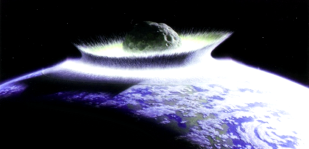
I found an article by Krausmann et al. on how human appropriation of primary production has evolved in the past 100 years or so. Human appropriation of net primary productivity (HANPP) has about doubled since early 1900 so that in 2005 humanity appropriated about 25% of all primary production on the continents. This has been one of the main causes of the ongoing wave of extinctions.

The article also showed some positive trends. Even though HANPP has doubled the population has actually grown by a factor of about 4. This means than HANPP per capita today is much lower than it was a century ago. This reduction has been possible thanks to improvements in land use efficiency (mainly due to modern agriculture). Today we produce much more food per unit of area than we used to. This positive development has nevertheless not been enough to reduce the total footprint of humanity.

Authors conclude with some possible extrapolations into the future. Earlier I wrote about my adventures among the IPCC mitigation scenarios (see also this). I focused on the way modellers dealt with nuclear power, but I was also tempted to highlight the crazy assumptions on bioenergy (with carbon capture) that many modellers made. Kraussmann et al. noted the same in their paper. Many mitigation scenarios casually imagine bioenergy use of around 300EJ/year (some assume much more. GCAM up to 862 EJ!). Figure 4 from the paper sketches what this implies for human impact on the biosphere. It would mean another doubling in HANPP and in a much shorter period of time.If you thought human have been causing serious environmental damage during the past century just wait what is going to happen in this one if we follow modellers fantasies!

Finally humanity came up with a climate policy that has real impact.
I have tried to find some serious discussions on the ecological impacts these models imply, but to no avail. Can somebody help me with this or is it really true that there is none? It seems that if primary productivity (tons of biomass or whatever) is assumed to be same before and after human meddling, modellers call meddling sustainable. There seems to be no discussion on biodiversity impacts, extinctions, erosion etc. etc. For that matter there seems to be very little discussion on impacts for food production either.
Maybe I am missing something, but ambitious IPCC mitigation scenarios assume a carbon price that rises to the level of 1000$/tCO2 (or much more) by the end of the century. If a hectare of land ties down let us say 5 tons of carbon per year, the revenue from CO2 capture schemes could be almost 20000$/year. If the same hectare produced 7 tons of wheat at about 250$/ton, revenue would be about 2000$/year… an order of magnitude less. Wouldn’t this create a very strong incentive for farmers to move from food production to BECCS (bioenergy with carbon capture and storage) game? Since the food is nevertheless needed, its price must start tracking the carbon price and increase massively during this century. I have a nasty feeling that modellers haven’t thought this through.

450ppm really is possible!
It is a cause for concern when modellers feel it safer and easier to build these kinds of scenarios rather than inform people that (thanks to colossal policy failures) 2 degree target is essentially unfeasible. It is about time modellers stop providing fig leaves for the policy makers.
“The beginning of all wisdom is acknowledgement of facts.”: Juho Kusti Paasikivi, the 7th president of Finland after Finland had lost a war against Soviet Union.




2 comments
Comments feed for this article
25/04/2015 at 1:20 PM
Short list of dishonest and silly arguments in energy discussions | PassiiviIdentiteetti
[…] If somebody expresses concern, that single minded focus on climate change ignores and sometimes makes worse other environmental problems, attack them as bad human beings. At the same time cheer mitigation options with obviously disasterous environmental consequences. […]
16/03/2018 at 7:03 PM
SSP X – The missing pathway | PassiiviIdentiteetti
[…] of social or ecological impacts. I spot a fairly serious problem here and this is a problem that has been around for a while (read my earlier observations on this here). Incentives for huge increases in bioenergy are […]